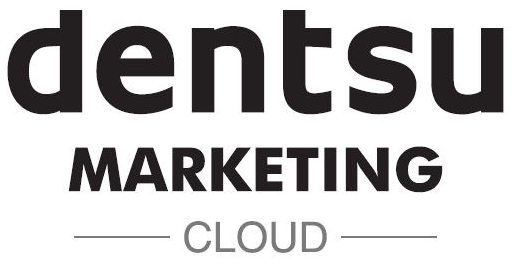Media buying has evolved tremendously over the years. Programmatic ad buying (and selling) has played a significant role in changing the face of online advertising. This coupled with the uprising of social media marketing caused an unprecedented disruption. We went from human-based deal structuring experiences to sophisticated tools and automated processes to buy digital inventory. What a boon this was and continues to be! These tools, platforms, and features allow businesses to automate repetitive tasks and simplify operations. Moreover, as marketers it continues to help us optimize our campaigns in alignment with our objectives and business goals.
Automation saves 30% of your time as a digital marketer
According to an article by Business.com – when you use a platform that prioritizes automation, you save around 30% of your time as a digital marketer. Being able to free up time for marketers and increasing the efficiency in campaign management presented a huge opportunity for demand side platforms. The market size of global marketing automation was valued at $3.3 billion in 2019 and is projected to reach $ 6.4 billion by 2024. This growth is backed by companies increasingly using cloud-based marketing automation software and leveraging advanced technologies to enhance the customer experience. With these favourable conditions, it comes as no surprise that AI and machine learning solutions are a top priority for many ad tech companies in the industry.
While automation has been adapted across various functions, let’s understand the compelling ways it’s branched out across media buying. One of the most basic automation solutions we started to use is ad scheduling. It’s offered by all consoles to bring ease to planning and delivery of ads. But what really changed the game in the favour of automation was solutions around dynamic creatives, automated placements, and budget management.

The graph above shows us the AI technology that marketing and agency professionals are comfortable with. We work with these solutions daily as they are integrated on all the sophisticated media buying platforms. Let’s look at some of these widely used solutions that are really helping digital marketers today. AAA (Automated App Ads by Facebook) and UAC (Universal Ad Campaigns by Google) are supporting app brands to scale and optimize their advertising with minimal efforts. They provide features like dynamic creatives, automated placements with a target audience of all interest groups (within their respective ecosystems). With these features brands can easily upload main aspects of a creative, select the location of the ad and specify a budget for the campaign in order to get started with advertising across android and iOS.
Another widely used feature is CBO (Campaign Budget Optimisation by Facebook), that really helps minimize wastage of ad spends. CBO enables marketers to set a campaign level budget instead of setting individual ad set budgets. This budget has flexibility to spend more on ad sets with the best opportunities, and less on underperforming ad sets.

Ultimately, these solutions encourage a hands-off approach and allow their algorithm to work freely so that they can bring in effectiveness in spending, improve time efficiency for the marketers, and most importantly maximize performance of the campaigns. Ironically though for marketers, much of the time saved by implementing these automated processes is spent in trying to identify the key contributors of a campaign’s performance. The limited visibility on performance breakdowns on these platforms leave marketers in the dark and makes it challenging to understand what audience type or delivery mechanisms works best for the brand. This further prevents them from being able to adopt a well-rounded strategy on other buying channels.
An automobile brand being able to understand that the engagement for their mobile heavy creative is high among males between the age of 30-45 who are interested in gaming can be important from a learning point of view. The brand can leverage this information on other buying channels to enhance its marketing efforts and boost engagement on other channels as well. The graph below evidently shows marketing and agency professionals who believe it is important to know ad placement details related to AI-run ad campaigns.

Lack of transparency in the current environment makes it challenging to get valuable performance insights for your brand’s message on each channel. Additionally, being able to analyse performance across channels comes with its own set of complexities.
Both Google and Facebook provide reporting on performance, but further insights are limited. Given that they are trying to preserve the integrity of their own ecosystem, it’s absolutely understandable why these platforms can’t share their performance data with each other. However, a constrained set of performance data makes marketers feel like they’ve sacrificed automation for transparency.
Brands should have the flexibility to transpose performance learnings from one platform to another
Observing the performance capabilities, it’s imperative that brands use these advanced automated features made available on top-of-the-line platforms like Facebook and Google. However, we feel that it’s equally important for brands to have the flexibility to transpose performance learnings from one platform to another. There are many companies that feel this is an important aspect of campaign planning and are trying to solve for this gap.
Evidently there’s an emerging need for intelligent automation that guides marketers on performance. Bringing in more insights for granular control from otherwise closed environments and guiding marketers towards budget optimisation, creative optimisation, identifying interest cohorts that work best; are features that will set solutions apart for brands. An arsenal of powerful insights like these will certainly help marketers drive more value from existing campaigns and also help them plan better for future marketing endeavours.
To make this a reality, ad-tech companies like Dentsu Marketing Cloud have learned to leverage their deep integrations with these walled garden platforms and bring out valuable performance learnings for their clients. Brands using DMC Campaign Manager [Targeting] get access to performance insights and are able to achieve on average a 20-30% increase in campaign performance. Within the DMC ecosystem, we’re able to help our marketers analyse which interest cohorts are working for them and which they could consider pausing. Similarly, marketers have access to bid adjustment recommendations on demography (gender, age-group) and delivery platforms (Facebook, Instagram), depending on the performance of each ad set. These granular insights help brands understand where and how their audiences are engaging and simultaneously have a more data-driven approach towards optimization.
We see this as a step towards mitigating the trade-off between automation and transparency for brands. Facilitating marketers with intelligence that can help improve performance, and optimize campaigns efficiently ultimately helps them drive more value to create a greater impact in the customer journey.
To learn more about Dentsu Marketing Cloud, you can reach out to dmcsupport@dentsu.com.



![Read more about the article Product Update: The New DMC Campaign Manager [Budget]](/wp-content/uploads/2021/09/3-300x169.png)